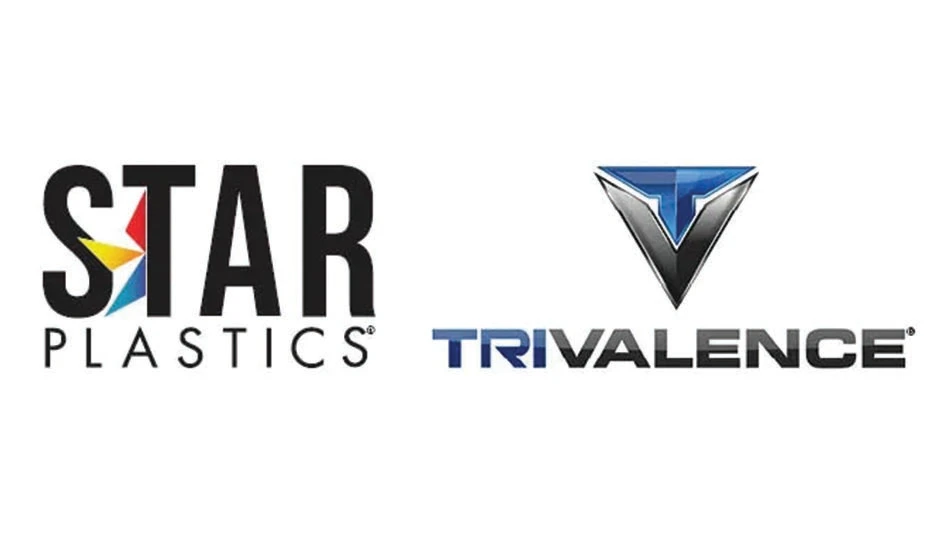Collectors, processors and traders of scrap materials are likely to look back on 2013 and remember several causes of stress they encountered. What caused the stress may vary depending on which materials recyclers focus on and to what extent they trade with China.
The ferrous scrap sector experienced less than stellar arisings of materials and a troubling lack of export demand. These problems tied into a sense of concern about the state of the true global demand for steel and ferrous scrap heading into 2014.
Nonferrous traders have had troubles of their own to address in 2013. Stainless steel markets have remained depressed and nonferrous trading also has been affected by the predominant recycling story of 2013: China’s Operation Green Fence.
|
Public Discourse The potential conflict between recycling’s volatility and running a publicly traded company in a climate that expects predictable and improving quarterly results has again made its presence known in 2013. When Sims Metal Management, with corporate headquarters in Sydney and New York, announced its intention to delist from the New York Stock Exchange (NYSE) in the summer of 2013, it did not mention wishing to avoid Wall Street scrutiny as one of the reasons. And indeed, the company will continue to be publicly traded and listed in Australia. “When accomplished, deregistration will reduce administrative costs and the complexity that is associated with a dual listing in both the U.S. and Australia,” the company says of its NYSE delisting. However, a presentation to investors summarizing the company’s fiscal 2013 year includes figures such as revenue declining 20% and underlying earnings per share down 77%, the types of numbers that are seldom greeted warmly by Wall Street analysts. On the paper and plastic side, U.S.-based recyclables hauler and processor Waste Management Inc., based in Houston, pointed to recycling volatility as a drain on its second quarter 2013 earnings. “Average recycling commodity prices were approximately 12.5% lower in the second quarter of 2013 compared with the prior year period,” the company’s CEO David Steiner remarks. “In total, recycling operations negatively affected earnings by 5 cents per diluted share in the second quarter when compared to the prior year period. We are pleased with our results for the second quarter and year to date, which are on plan, despite the greater than expected negative impact from our recycling business,” Steiner adds. |
Traders of plastic scrap, mixed metals and recovered fibre began hearing about Green Fence in February 2013. From that point on, the rest of the year has largely involved figuring out how to minimise negative impacts and adjust to the inspection and rejection policies adopted through the cooperative efforts of several Chinese government agencies.
A Little Too Calm
Although buyers in China provide part of the market for ferrous scrap exported from North America and Europe, a combination of factors has allowed the ferrous sector to be the least affected by Green Fence.
Ferrous scrap sent to China is relatively homogenous and is not as subject to the health and hygiene issues (moisture, mold, pests) that attract negative attention the way substandard paper or plastics shipments can. As well, ferrous scrap’s reputation as a material that may be under-reported in value is not as popularized as copper’s.
Nonetheless, Green Fence concerns may have played a role in the nearly 17% drop in ferrous scrap shipped to China from the U.S. in the first seven months of 2013. According to U.S. Geological Survey (USGS) statistics, China purchased just 1.14 million tons of ferrous scrap from the United States in the first seven months of 2013 compared with 1.37 million tons in the same period in 2012.
China’s reduced scrap purchases from the U.S. also may have been reflective of the disappointing amounts of scrap generated in North America in 2013. Recyclers there and in Europe continued to complain of unsteady or downright weak scrap flows, as large-scale recovery in the construction sector has remained elusive both in Europe and North America.
In the United States, the lack of scrap flows can be seen in the overall export figures, as America’s ability to supply the rest of the world with ferrous scrap fell by 23% in the first seven months of 2013 compared with the same time span in 2012.
Whereas the United States exported 6.01 million tons from January to July 2012, that figure dropped to 4.63 million tons in the first seven months of 2013, according to the USGS.
Europe has experienced similar issues with restricted scrap generation and a disappointing decline in interest from export markets, including from Turkey, its largest buyer.
As summarized by Christian Rubach of Germany’s TSR Recycling in the October 2013 Bureau of International Recycling (BIR) World Mirror, “Turkey imported 18.2% less steel scrap in the first half of this year, and the country is still experiencing severe difficulties.”
Also in the World Mirror, Brussels-based European Ferrous Recovery and Recycling Association President Tom Bird writes, “For scrap operators, competition for raw material remains fierce, putting increasing pressure on volumes. This situation has not been helped by the holiday period when arisings from engineering works, etc., were hampered,” he continues. “Volumes of material are still well down across the scrap sector, with some operators reporting tonnages still down as much as 50% in some areas.”
The lack of material generation and the decline in overseas buying have resulted in one positive in the form of relative price stability in the ferrous market in 2013. “The market seems to be following the familiar pattern of small peaks and troughs seen over the last 18 months or so,” writes Bird. “As has been mentioned before, the market is operating within a certain band depending on buying activity.”
Steel mill purchase transaction figures in the U.S. collected and averaged out by Management Science Associates (MSA) for its Raw Material Data Aggregation Service (RMDAS) bear out Bird’s assertion.
Between April and October 2013, average prices for No. 2 shredded scrap in the U.S. ranged between $392 and $360 per ton, though the trend in the most recent six-month span is discouraging. That high figure of $392 per ton occurred in April, while the low mark of $360 occurred in the October buying period.
An Imposing Fence
While the ferrous market was scrambling for adequate supplies and waiting to see if export markets would improve, recyclers of most other materials had their 2013 turned upside down by China’s Operation Green Fence.
Many recyclers learned of Green Fence in February 2013 when their containers were being held up at ports in China either because of questions about their own shipments or because of the huge backups caused by the heightened inspection routines.
Shippers of nonferrous scrap, paper and plastic began encountering questions and rejections not from customers, but from Chinese government agencies operating at port locations. In many port cities, if a shipper sent in 20 containers of scrap materials and just one of them had a documentation or contamination issue, all 20 containers were held up at the port.
Recyclers in Europe and North America quickly complained about a lack of advance notice or explanation from the Chinese government about Green Fence; about the lack of understanding of the recycling industry by inspectors; and about the unrealistic standards for material purity that China expected of inbound shipments.
Presentations by representatives of Chinese government agencies initially focused on public health and safety issues, pointing to loads contaminated with brackish water, mold, pests and even live ammunition. Ferretting out non-sorted waste shipments has remained one of the stated goals, though another Green Fence aspect has involved tax evasion.
 In a presentation at the 2013 China National Resources Recycling Association (CRRA) International Recycling Conference in September 2013, Chen Zejun of the China Customs office in Guangzhou said the scrutiny provided by Green Fence had cut down on “false reports” that had been used by importers as a tax evasion method.
In a presentation at the 2013 China National Resources Recycling Association (CRRA) International Recycling Conference in September 2013, Chen Zejun of the China Customs office in Guangzhou said the scrutiny provided by Green Fence had cut down on “false reports” that had been used by importers as a tax evasion method.
Chen said collecting appropriate taxes and import duties was one of four goals that China Customs, the Chinese Ministry of Environmental Protection and the Administration of Quality Supervision, Inspection and Quarantine (AQSIQ) had as it developed and introduced Operation Green Fence.
Chen told attendees, “There is a lot to be recycled, but it has to exceed certain standards. You cannot dump nonrecyclable or nontreated waste on other countries.” She said Green Fence has been designed to address four problems:
- The importation of low-value waste;
- The selling or lending of import certificates;
- False reports on import documents pertaining to the product enclosed or the value of the scrap product; and
- The reselling of imported scrap to non-import certificate holders.
For recyclers in Europe and North America, the immediate headaches involved financial losses because of rejected shipments, the logjam at Chinese ports and the creation of stockpiles when grades like mixed plastics were withheld from further shipment.
By the time of the 2013 Paper Recycling Conference partnered with the PSI Conference, held in Chicago in mid-October, recyclers of mixed postconsumer materials claimed to have invested in increased automated or manual sorting of materials and to have slowed down their sorting lines in an attempt to improve quality.
In a session at the conference, Johnny Newsome of U.S.-based packaging maker Sonoco, whose company also manages 28 recycling plants, remarked, “We’ve added sorters and we’ve slowed our lines down, and the quality is better as a result.” While some of these measures were designed as a response to China’s Operation Green Fence, Newsome said, “I think U.S. mills will benefit also.”
An American paper mill buyer in attendance, Ryan Anderson of SCA North America, also pointed to the potential long-term benefits of Operation Green Fence’s ability to cause recyclers to strive for cleaner shipments. “I think we’re to the point where [quality improvement] has started to happen,” Anderson told delegates. “Green Fence has made it easier to go back to the suppliers and hold their feet to the fire.”
Fits and Starts
Nonferrous metals prices have achieved a reputation for volatility, so by some measures 2013 could perhaps be viewed as having less drama than some of the previous years.
However, copper pricing experienced its typical ups and downs throughout the year, Operation Green Fence made its presence known in the nonferrous scrap market and the continued slump in stainless steel markets claimed a potential casualty.
Copper prices started the year with some forward momentum, with the January London Metal Exchange (LME) cash settlement price averaging more than $8,000 per tonne, gaining on the December 2012 figure of $7,960.
The momentum lasted through February before embarking on a decline in March that saw average copper prices fall in four of the next five months, reaching a level of less than $6,900 per tonne in July. Late summer brought a slight rebound, with August and September cash buyer transactions averaging more than $7,160 per tonne.
Measured by turmoil and financial losses, Green Fence seemed to hit the plastic scrap sector the hardest, followed by recovered fibre shippers. Nonferrous recyclers were not immune from the impacts, however.
Even if shippers did not experience rejected shipments, the containers they shipped from ports in Guangzhou in the south of China to Qingdao in the north were often snarled in logjams in 2013 that added expensive drayage and other charges to transactions.
CCIC, AQSIQ and China Customs inspectors also scrutinized nonferrous scrap shipments. Among the things inspectors have been looking for are mismatched documents submitted by importers trying to pay lower duties; items in wire and cable shipments that appear to be more like obsolete electronics; and pieces of printed circuit board in zorba and other mixed metal shipments.
The long-term slump in the stainless steel scrap sector has put the future of Keywell LLC in the United States in jeopardy. The company began closing down a facility in New York state in September, and news began circulating shortly thereafter of its difficult financial situation.
The Chicago-based company has filed for bankruptcy protection at the same time it may have agreed to be sold to a long-time competitor. According to a Reuters report, Mark Lozier, Keywell president and CEO, has tentatively agreed to sell the firm to U.S.-based Cronimet Holdings Inc.
According to an article in the Wall Street Journal, in court filings Lozier cites slumping nickel prices and slow sales for Keywell’s woes. The company says it had sold only $142 million worth of scrap metal in the first eight months of 2013, well below its typical level of activity. In its filings, Keywell also cites delays by some big stainless steel customers in taking delivery.
As 2013 draws to a close, many recyclers in Europe and North America may be thankful they have made it through a rough year while remaining skeptical as to whether 2014 will be markedly better.
The author is editor of Recycling Today Global Edition and can be contacted at btaylor@gie.net.
Get curated news on YOUR industry.
Enter your email to receive our newsletters.
Latest from Recycling Today
- LG details recycling activities
- Algoma EAF is up and running
- Toyota-Tsusho completes acquisition of Radius Recycling
- CATL, Ellen MacArthur Foundation aim to accelerate circular battery economy
- Commentary: Expanded polystyrene: 98 percent air, 2 percent plastic, 100 percent misunderstood
- AMCS appoints general manager for North America
- How tariffs, regulations affect LIBs recycling in US, EU
- Schwan Cosmetics introduces packaging free of styrene, ABS





